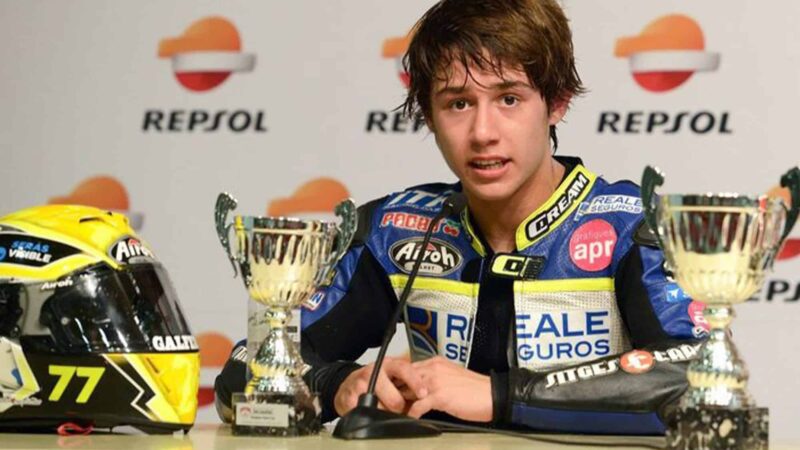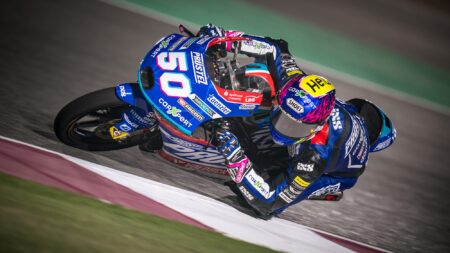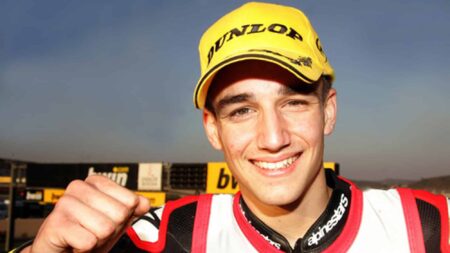This is why the insider argument that “they died doing what they love” doesn’t stand up. If a 13-year-old gets drunk or causes a road accident while driving a car, who says, “it’s okay, they were doing what they love”? No one.
So when should kids be allowed to race motorcycles, as opposed to minibikes?
A line has to be drawn somewhere. And currently the line is drawn all over the place. The CEV junior world championship takes kids from 14-years-old, the minimum age for a Red Bull Rookie is 13, while the Asia, British, European and Northern Talent Cups accept 12-year-olds.
In many countries children are assumed to take a step towards adulthood when they reach 16. For example, British 16-year-olds are allowed to have consensual sex, marry, join the army and work full-time if they have left school. In other words, they should be focused on school – both education and sport – until they are at least 16.
The fact is that motorcycle racing isn’t like most sports. It has an important danger element. Rugby Union is also dangerous, so its governing body writes regulations for younger players that restrict the game to reduce physical contact and therefore the potential for serious injury.
The pressure on 12-year-olds to win races is immense and arguably much too much
And yet in motorcycling 12-year-olds are allowed to ride pretty much the same Moto3 machines that are used in grand prix racing.
The fact that they get to race on the world’s safest circuits is wonderful – and perhaps the kids think they are safe for this reason – but recent events prove that this isn’t enough.
Therefore would 16 be a better minimum age for CEV, Red Bull Rookies and the various talent cups? The difference isn’t day and night but it is significant. If you can join the army at 16, why not race motorcycles?
Kids also die racing minibikes, but there should be fewer fatalities if younger children were restricted to lower-performance machines.

Andreas Pérez, who died in similar circumstances to Millán at Catalunya in 2018
FIM
And if the minimum age for racing motorcycles is raised to 16, perhaps raise the minimum age for grand prix racing to 18, as it used to be. What would be lost through making these changes? Nothing, really. All the grids would be full, just the same. And all the grids for minibike racing would be full. So all the people making money out of these championships would still make money.
Within these considerations is another question: why the hurry? What is gained by bringing kids into professional motorcycle racing arenas at 12, 13, 14 or 15 years of age? Nothing much.
However, lowering minimum age limits has transformed the sport of motorcycle racing. Riders who haven’t been signed up to a top team by the time they are 14 or 15 are most likely already out of the game. The pressure on 12 and 13-year-olds to win races is therefore immense and arguably much too much for some of them to deal with.
How many businesses read these headlines and decide not to get involved?
The sport is overheating, so someone needs to turn down the heat. And the best way to do that would be to raise minimum age limits.
Beyond the horrors suffered by all the families involved in these fatalities the second important factor to consider is how the rest of the world sees us. Tell a non-motorcyclist that a 14-year-old was killed racing a 130mph motorcycle and he or she will most likely be appalled. How is that even possible, they ask.
Does this matter? It cannot not have a negative effect on motorcycling and motorcycle racing, and if you believe it’s good to promote bikes and biking to a wider audience then the effect of these deaths does matter.
How many parents read the headlines about Millán and Pérez, and decide then and there that they won’t buy their kids a scooter or a motorcycle to use on the roads?
At the same time how many businesses read these headlines and decide that this is not a sport with which they want to be involved? Perhaps motorcycle racing would attract more sponsorship if it looked less barbaric to outsiders.
And don’t blame the media for writing the headlines, because these are significant stories.




